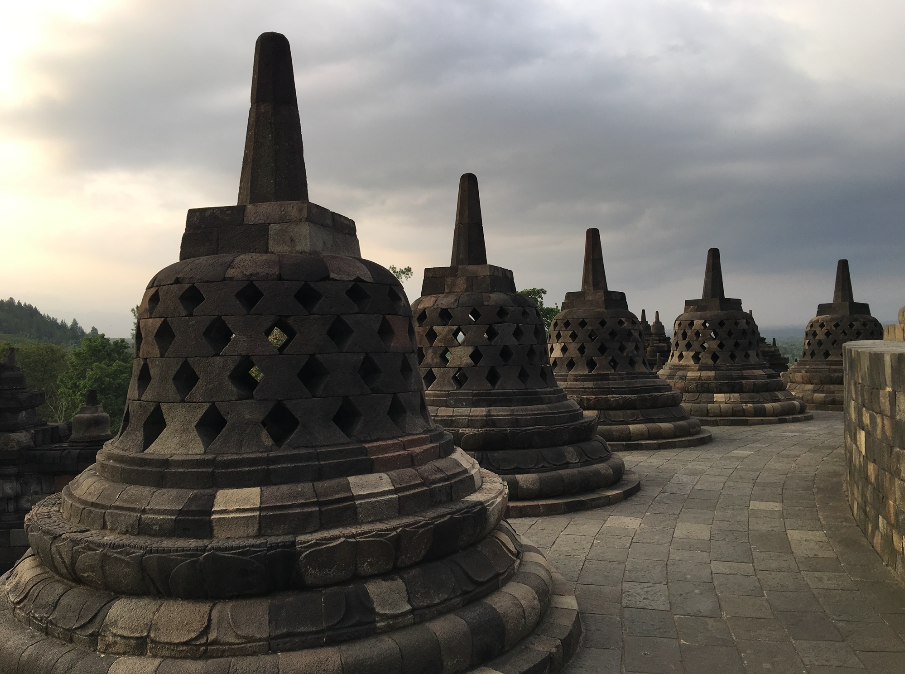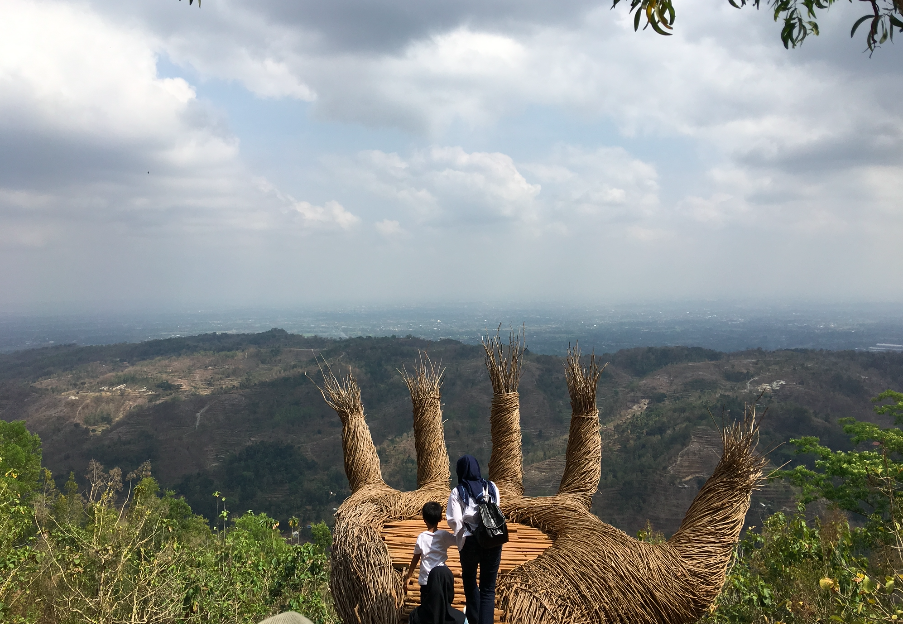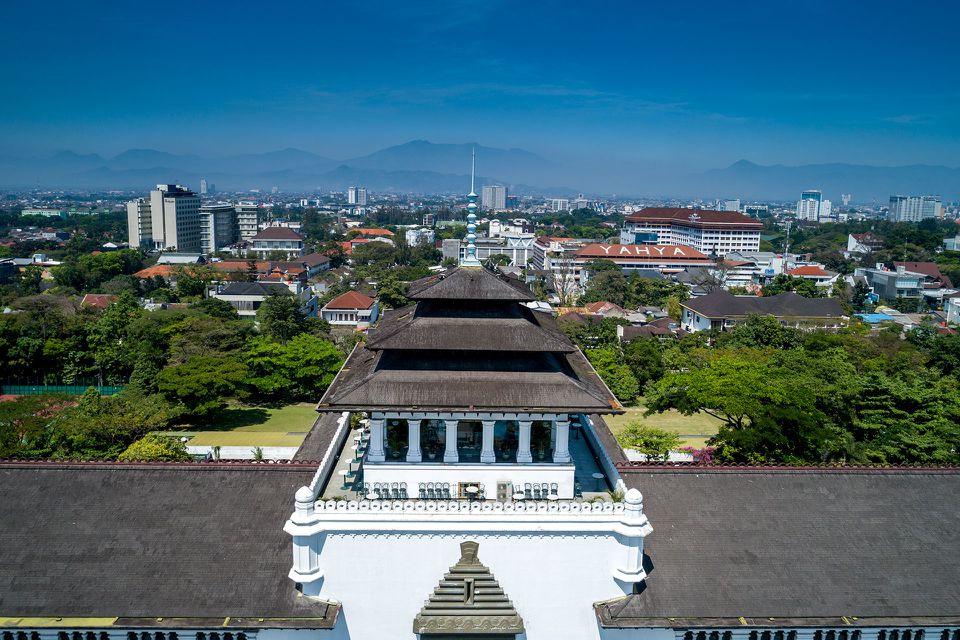
Borobudur

Fun fact – did you know that Indonesia is the world’s most populous Muslim country, yet it is also home to the largest Buddhist temple complex in the world? This is testament of how various religions can co-exist in one country. Borobudur: This famous Buddhist temple, dating from the 8th and 9th centuries, is located in central Java. It was built in three tiers: a pyramidal base with five concentric square terraces, the trunk of a cone with three circular platforms and, at the top, a monumental stupa. The walls and balustrades are decorated with fine low reliefs, covering a total surface area of 2,500 m2. Around the circular platforms are 72 openwork stupas, each containing a statue of the Buddha. The monument was restored with UNESCO’s help in the 1970s.


I enjoyed the surrounding views from the top layer of Borobudur, but with any UNESCO heritage site, there are lots of people visiting and the entrance fees are expensive. To capitalise on the site, many tour agencies have also offered sunrise and sunset tours, which is a top-up of $20 on the entrance ticket, just to get coveted views of that sunrise/ sunset. I find it absurd to pay extra for this natural phenomenon which occurs everyday. We decided to go in the afternoon to avoid the crowds and the number of people there was not too overwhelming. We stayed past the 5pm closing time, and by this time the hordes of tourists were coming here for the sunset view. They had special stickers on their shirt to distinguish them from the normal visitors. A security guard came to check our tickets and said that we have to leave the temple compound immediately because we did not sign up for the sunset tour. We simple walked to the other side of the temple because it is quite large and luckily we still managed to catch a glimpse of the magnificent sunset while evading the annoying guard.



The Borobudur museum was quite informative and it explained how the volcano eruption of Mt Merapi actually affected the temple complex because the volcanic ash was acidic and started to corrode the stone structures. With UNESCO aid, they were able to restore the structures slowly, although today you can still see some blocks of stones with decapitated Buddha statues.
Entrance ticket to Borobudur: US25 for adult ticket
Prambanan

Another UNESCO site near the city of Yogyakarta is Prambanan. Built in the 10th century, this is the largest temple compound dedicated to Shiva in Indonesia. Rising above the centre of the last of these concentric squares are three temples decorated with reliefs illustrating the epic of the Ramayana, dedicated to the three great Hindu divinities (Shiva, Vishnu and Brahma) and three temples dedicated to the animals who serve them.


While Borobudur was Buddhist, Prambanan was Hindu. I could see the striking resemblance of Prambanan with Angkok Wat in Cambodia. The temple was in complete ruins due to earthquakes until reconstruction started in 1937. Till date, reconstruction is still ongoing as there are still piles of rubble surrounding the reconstructed temples, awaiting restoration.


I enjoyed strolling around the Prambanan temple complex and imagining myself as on the Tomb Raider set. Most tourists visit the main Prambanan temple only. There are actually other temples such as Sewu Temple, Bubrah Temple and Lumbung Temple within the compounds, so take a stroll in the large garden to visit the other parts and make the most of your entrance ticket. The Hindu temples are decorated with reliefs illustrating the Indonesian version of the Ramayana epic which are masterpieces of stone carvings. For those who do not want to walk under the scorching sun, there is a mini train service which brings visitors around the park.

The Prambanan museum was not so interesting because most of the exhibits were in Bahasa Indonesia which we did not understand. There were many stone blocks waiting to be restored.

Entrance ticket to Prambanan: US25 for adult ticket

To save money, buy the combo ticket for both Borobudur and Prambanan which cost US$40. You do not need to visit both places on the same day, you can save the other attraction for the next day as the combo ticket is valid for two consecutive days.
Besides the two main temples of Borobudur and Prambanan, there are also other lesser-known temples in the area, such as Ratu Boko, Mendut and Pawon Temple. Having had enough of visiting temples over two days and not waiting to incur more costs in entrance fees, we did not visit the other temples.
How to get there?
You can easily get a Grab car to either Borobudur or Prambanan temple.
For those who are more adventurous and want to try out the public transport system in Yogyakarta, you can take the Trans Jogja bus. While the Trans Jogja can take you to the Hindi Prambanan temple, these small buses do not go all the way to Borobudur. To get to Borobudur by bus, you must take the Trans Jogja 2B bus to the Jombor Bus Terminal. (Rp 4,000). From the Jombor Terminal, change to another bus to Candi Borobudur, with a journey of around one hour and cost Rp 25,000 each way. Prambanan is nearer to the city of Yogyakarta compared to Borobudur.


